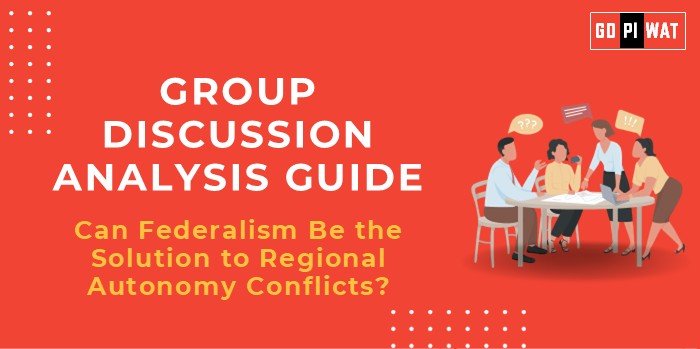📋 Group Discussion Analysis Guide: Can Federalism Be the Solution to Regional Autonomy Conflicts?
🌐 Introduction
Federalism is a governance model adopted by diverse nations to balance national unity and regional diversity. As regional autonomy conflicts persist globally, federal systems like those in the U.S., India, and Ethiopia demonstrate both success and challenges. Its relevance is amplified by recent events in countries like Ethiopia and Spain.
📊 Quick Facts & Key Statistics
- 🌍 Number of Federal Countries: 27 nations represent 40% of the global population, including the U.S., Germany, and Australia.
- 🇮🇳 India: A quasi-federal structure with 28 states and 8 union territories, it successfully reorganized states linguistically in the 1950s.
- 🇪🇹 Ethiopia: Ethnic-based federalism has led to conflicts like Tigray, resulting in 600,000+ deaths since 2020.
- 🇪🇸 Spain: Federal-like autonomy for Catalonia and the Basque Country reduced separatist violence by 80% since the 1990s.
🤝 Stakeholders and Their Roles
- 🏛️ Central Governments: Ensure national integration and uniform policy implementation.
- 🏙️ Regional Governments: Represent local interests, fostering cultural and linguistic preservation.
- ⚖️ Judiciary: Interpret federal laws, mediate disputes between regions and the center.
- 🗳️ Citizens: Advocate for regional autonomy or national unity based on socio-economic priorities.
📚 Achievements and Challenges
🏆 Achievements
- 🇮🇳 India: Linguistic reorganization addressed regional demands while maintaining unity.
- 🇪🇸 Spain: Autonomy measures curtailed separatist violence by 80%.
- 🇺🇸 U.S.: States exercise significant policy autonomy within a stable federal framework.
⚠️ Challenges
- 🔴 Ethiopia: Ethnic federalism exacerbated secessionist tensions and conflicts like Tigray.
- 📉 India: Persistent fiscal imbalances limit states’ autonomy.
- 🔄 Spain: Catalonia’s ongoing independence claims highlight the fragility of federal systems.
💡 Effective Discussion Approaches
📜 Opening Approaches
- 📈 Highlight federalism’s successes, such as Spain’s conflict reduction.
- ⚖️ Use data like Ethiopia’s Tigray conflict to illustrate federalism’s risks.
🔄 Counter-Argument Handling
- ⚙️ Acknowledge failures in specific cases while proposing mechanisms like equitable fiscal allocation.
- 📖 Introduce examples like India’s linguistic state reorganization to show flexible federalism’s potential.
📊 Strategic Analysis of Strengths & Weaknesses
- 🌟 Strengths:
- Accommodates regional diversity (e.g., linguistic states in India).
- Decentralized governance promotes local empowerment.
- ⚠️ Weaknesses:
- Risk of inter-regional economic disparities.
- Potential for secession in ethnically based systems like Ethiopia.
- ✨ Opportunities:
- Enhance development through fiscal federalism.
- Foster peaceful co-existence by granting controlled autonomy.
- ⚡ Threats:
- Escalation of separatist movements.
- Administrative inefficiency in highly decentralized systems.
🗣️ Structured Arguments for Discussion
- 👍 Supporting Stance: “Federalism enables equitable power-sharing, as seen in Spain’s violence reduction through autonomy.”
- 👎 Opposing Stance: “Ethnic federalism can deepen divides, as Ethiopia’s Tigray conflict demonstrates.”
- ⚖️ Balanced Perspective: “Federalism’s success depends on its adaptability to address both regional aspirations and national interests.”
🎓 Connecting with B-School Applications
- 📘 Real-World Applications:
- Analyze federalism’s role in conflict resolution and economic policy.
- Study decentralization’s impact on governance.
- ❓ Sample Interview Questions:
- “How can federalism support sustainable regional development?”
- “Evaluate the impact of ethnic federalism on conflict resolution.”
- 📖 Insights for B-School Students:
- Understand policy frameworks balancing central and local governance.
- Explore federalism’s implications for public administration and development.


